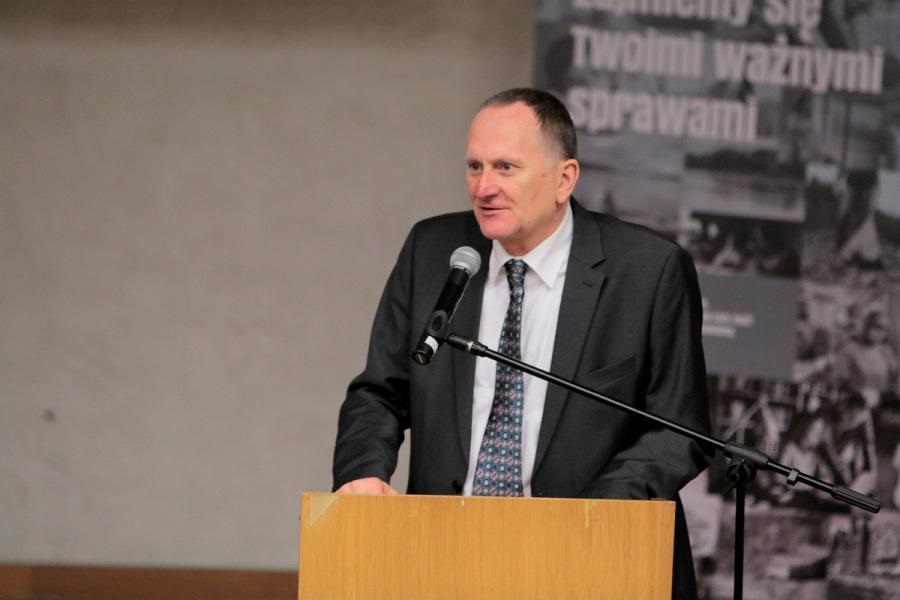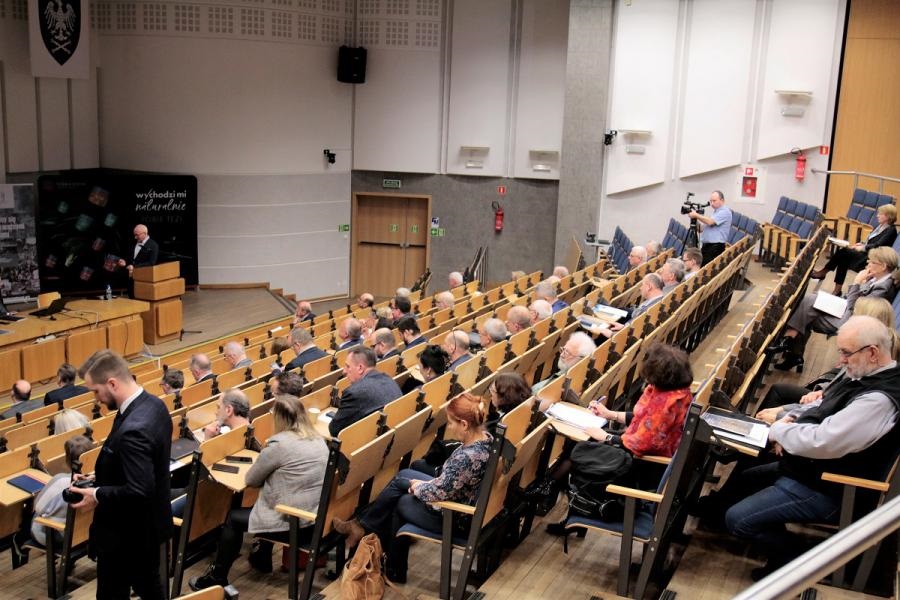
| Maria Sztuka |
Last year’s scientific conference ‘Vistula River 2021 – Problems and Challenges’ was concluded by researchers from the Institute of Earth Sciences at the University of Silesia with a declaration to carry out another expedition to examine the state of Poland’s second-longest river. The researchers kept their word and on 15 July 2022, they launched their expedition from Ostrava near kilometre zero of the Oder river. During a 10-day rafting trip, they covered 740 km, making it to Szczecin on 24 July. Two days later, the first dead fish appeared at the level of the Oława river, and on 31 July nearly 8 tonnes of them were collected from the banks of the Oder – this was the beginning of a gigantic catastrophe. The research conducted by the expedition’s participants is therefore invaluable and a key resource for assessing threats to the river from both natural factors and human activity. The scientists did not stop with their July research; they conducted another study in October.
They presented the results of their analyses on 24 March 2023 at the conference ‘The Oder river 2022 – what do we know about the ecological disaster?’. Speakers from the University of Silesia were joined by scientists from the National Research Institute (Institute of Environmental Protection), the University of Szczecin, and the Technical University of Ostrava.
The opening of the conference was accompanied by the signing of a cooperation agreement between the Silesian Water Centre, represented by its director, Andrzej Woźnica, PhD, DSc, Assoc Prof. from the University of Silesia, and the Research Centre for Public Competition Law and Sectoral Regulation, represented by its director, Mirosław Pawełczyk, PhD, DLitt, Assoc. Prof. from the University of Silesia. This cooperation will serve to formulate proposals for specific legislative actions, because, as M. Pawełczyk emphasised, last year’s environmental disaster revealed a conflict in existing regulations, which require proper regulation.
The objective of the July expedition was to comprehensively analyse the state of the river. As in the previous year, during the exploration of the Vistula, researchers took physical and chemical measurements of the river water at every kilometre through the use of probes. They measured, among other things, the concentration of oxygen, chlorides, pH, conductivity and turbidity of the water. The samples taken were sent to laboratories for analysis, which checked for the presence of heavy metals, pharmaceuticals, and other hazardous substances in the water, in addition to the usual tests. According to Prof. Andrzej Woznica, apart from the low water level caused by hydrometeorological factors, in mid-July the Oder river was in a condition that did not differ from the average parameters of the past few years.
Prymnesium parvum
So far, the findings indicate that the direct cause of the gigantic ecological disaster was a bloom of golden algae (Prymnesium parvum), which is not a newly discovered species. Prof. A. Woźnica recalled that they were first found in Poland as early as 1937 in the Gdańsk Bay. However, their occurrence did not arouse the attention of scientists, so their presence was unfortunately not monitored, although signals from various parts of Europe and the world should have sensitised specific services not to underestimate these seemingly harmless organisms. Prymnesium parvum is found in waters whose salinity is at the level recorded in the Oder. The scientist confirmed that during both the July and October rafting trips, a copper bloom was visible, accompanied by thick, hard foam accumulating on the banks. The bloom could already be seen at the level of the Odra meanders, i.e. at the Czech border, and thus many kilometres before the Gliwice Canal. Prof. A. Woznica outlined the complex mechanism by which Prymnesium parvum releases its deadly toxin, prymnesin. It is this toxin that poses a direct threat, being dangerous not only to fish but to all living organisms.
‘It is a detergent that can eliminate all living cells if it comes into contact with cell membranes’, the scientist stressed.
Specialists from all over the world are trying to identify the factors that turn non-toxic bubbles floating in water into dangerous toxins.

Hypothesis
Based on their observations and the conducted analyses of the collected samples, the USil scientists set forth a hypothesis that the factor responsible for the release of toxins is the change in the osmotic pressure in cells containing the toxins, resulting from the mixing of salt water with golden algae and clean waters, which are much less salty (osmotic pressure builds up due to the difference in concentrations of chemical compounds in the solutions on both sides of the membrane).
‘Constant osmotic and ion conditions do not cause primesins to activate, this is confirmed by large bloom of Prymnesium parvum, e.g. in seas or coastal areas where the death of fish does not occur’, stated the researcher.
When analysing the level of salinity of the waters flowing from the Czech border, we can observe the following picture: the salinity rises rapidly at the level of Upper Silesia and then falls steadily. Another increase was recorded in the vicinity of the Copper Belt, but the salinity dropped after the tributaries of the Bóbr and Nysa Łużycka rivers, while a very sharp drop in salinity was caused by the waters of the Warta River.
According to the scientist, the height of the water level, the speed of the flow, and the temperature of the air all have a major influence on the prolongation of the activity time of the primesins. The surge was also mentioned among the factors contributing to the catastrophe, although, according to the speaker, it should not be exaggerated, as the researchers calculated that it was only about 17 million cubic metres, which moved down the Oder at a rate of about 50 km per day along its entire length, from the border to the sea.
‘In all cases of the recorded death of fish, there was the possibility of the creation of ion gradient, and this gradient should be taken into consideration when analysing the possible causes of fish mortality. The difference in salinity was relatively high, which confirms the hypothesis that the catastrophe was caused by the mixing of clean waters, with low mineral content, and waters with high mineral content’, concluded the scientist, while emphasising that the hypothesis needs to be confirmed not only by laboratories. To find the aspects accounting for this phenomenon in its entirety, the research should be conducted in the natural environment, in large facilities. The Gliwice Canal might prove ideal for the research.
Challenges
In his conclusion, Prof Damian Absalon outlined the objectives guiding the scientists’ work. The priority is to reconstruct the cycle that led to the release of the toxic primnesins.
‘We have highlighted the meteorological and hydrological situation, which, under certain conditions, can favour the emergence and intense growth of primnesins, but climate change alone cannot be blamed for this. The event is certainly influenced by a number of factors, including hydrodynamics, the management of water in the channelised section, the movement of the water mass, velocities, etc.’, emphasised the scientist.
The Oder river is polluted, but the level of salinity in the previous year was far from the peak recorded values, in particular from the period when coal extraction was at its highest, in the 1980s. The hydrologist expressed the opinion that there is a need for patrol monitoring, i.e. automated stations, which goal would be to measure key parameters. The role of the scientists is to determine which parameters are those and to specify what changes in their levels can cause a crisis. A well-designed monitoring system can determine the conditions under which it is appropriate to declare an alert, and can also forecast.
‘The conclusion that it was fresh water and not salt water that was the cause of the damage may seem shocking, but given the generally very poor condition of the Oder river, it is justified’, opined the researcher.
The need for a new approach to the river and a new model of managing its waters was discussed by Prof. A. Woznica. In the opinion of the director of the Silesian Water Centre, such tools should be created that will, on the one hand, maintain the welfare of the river and, on the other hand, enable several million people to live around its banks.
‘A rational tool is, among other things, to establish new rules for monitoring based on mathematical modelling, using modern digital techniques, which will make it possible to anticipate threats and effects’, the professor stated.
An important stage in the process of fixing the Oder, and all Polish waters, is legislative changes. Their absolute necessity was argued by lawyer Prof. Mirosław Pawełczyk.
‘Pollution is the result of increased consumption in many areas. There is, therefore, a need to develop a new model, i.e. a system of multidisciplinary regulations relating to the water sector. In the current situation, the perpetrator of the disaster remains anonymous’.
The article ‘Scientists’ thoughts on the Oder disaster’ was published in the May issue of Gazeta Uniwersytecka UŚ (USil Magazine) no. 8 (308).





